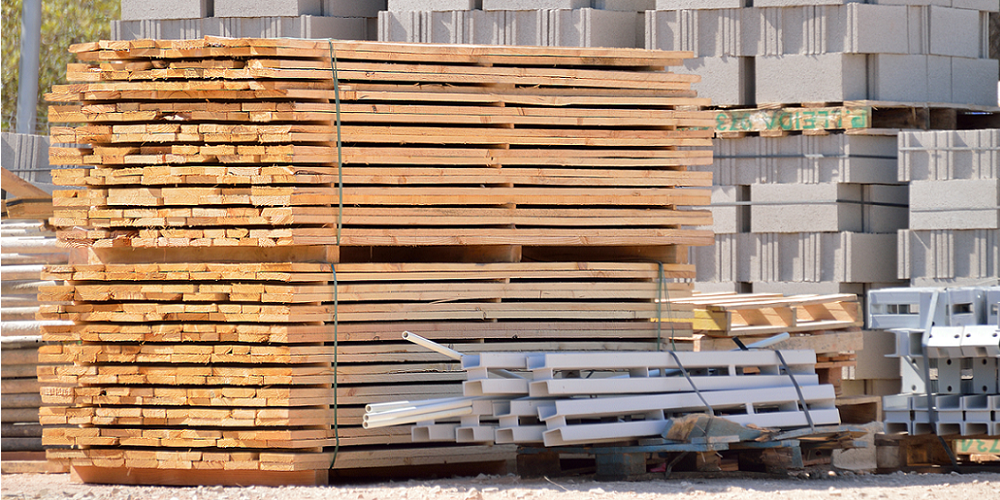
Two years after the initial impacts of the pandemic, the cost and availability of construction materials has yet to return to pre-Covid levels-- and remains one of the construction industry’s biggest challenges. Learn what you can do to protect profits and keep project timelines on track.
Table of Contents
Letting valuable construction materials go to waste is never a good business practice, even when costs are low and availability is at normal levels. But in an atmosphere of elevated prices and widespread scarcity, it can be especially damaging to the bottom line— and can easily throw a wrench in even the most meticulously planned project timelines. For maximum speed and accuracy, the best option is on-screen digital takeoff functionality that fully integrates with estimating processes, a key element of the ProEst estimating platform. By avoiding manual measurement and calculation errors, required quantities will be more precise, and unnecessary overages minimized.
For many contractors, creating and maintaining a continuously updated database for construction estimating is not a realistic expectation. That’s why a digital estimating platform with a costing database—complete with quarterly updates and geo-specific metrics—is key. RS Means data is a good example of one of three database options available with the ProEst estimating platform. Automatically updated on a quarterly basis, It provides accurate building construction costs data that helps pre-construction managers, architects, engineers, and contractors forecast, manage and control cost estimating with new levels of precision.
Over-ordering large quantities of construction materials can put you at the end of the line when materials are in short supply, but it has another downside, too: any benefit you might realize by ordering bulk shipments, assuming they are available, is usually lost to the extra time and labor required to store and manage the materials that aren’t used right away. Equally problematical is ordering materials on a daily basis; when supply chains are compromised, delivery can’t be guaranteed, and prices will generally be higher due to increased transportation and handling costs.
Scarce materials can have a major impact on estimated building costs and project timelines. That’s why it’s important to forecast costing and modify schedules based on a “normalized” scenario of similar projects that have been conducted in the past. Purpose-built applications designed for the construction industry often include conceptual estimating features, a vital tool that leverages historical data to better plan and understand projects that are not yet underway. With ProEst conceptual estimating, contractors can more accurately forecast costs and schedules by combining unit costs from source estimates with new project inputs—and can more easily make adjustments to material selection and design.
Having a working awareness of the impacts of materials shortages—most notably, higher costs and extended building schedules—is the first step toward mitigating the risk of completion delays and owner-generated penalties. Historical data captured on digital estimating platforms like ProEst provides an important baseline for construction project completion—a reliable model that can be modified to align with current materials availability. Further protection can be achieved through completion addendums that reference the potential for shortages specifically, minimizing the risk of contractual disputes and penalties if projects encounter delays.
Uncapped escalation clauses, once a rarity in construction contracts, are becoming more commonplace as the price of building materials continues to fluctuate. The escalation clause is an addendum that allows for adjustments in fees, wages, and overhead costs based on price fluctuations in the market. It shifts the burden for increasing costs, including material or labor shortages, from the general contractor (GC) to the project owner, important protection when materials costs can rise without notice.
Industry experts agree that issues related to material availability are best managed through open communication with stakeholders at the earliest design stages of a construction project, particularly with project owners. Contractors who employ an effective Customer Relationship Management (CRM) strategy—supported by industry-specific CRM applications—are better able to build and maintain strong relationships with engineers, architects, owners, and other project decision-makers; if and when price hikes and/or shortages occur, those relationships mean that the likelihood of a mutually agreeable solution is far greater.
In the best of times—when building materials are plentiful and prices are more or less stable—being a loyal customer to your suppliers makes good business sense. Fast forward to pandemic-era construction, and the rules have changed: contractors with a diversified supply chain are less affected when materials are in short supply, as diversification significantly increases the likelihood of obtaining materials from alternate sources. As competition for available resources grows, suppliers naturally become more selective about who they support; creditworthiness, a history of on-time payments, and other responsible business practices can contribute to the “preferred” status contractors need when competing for scarce materials.